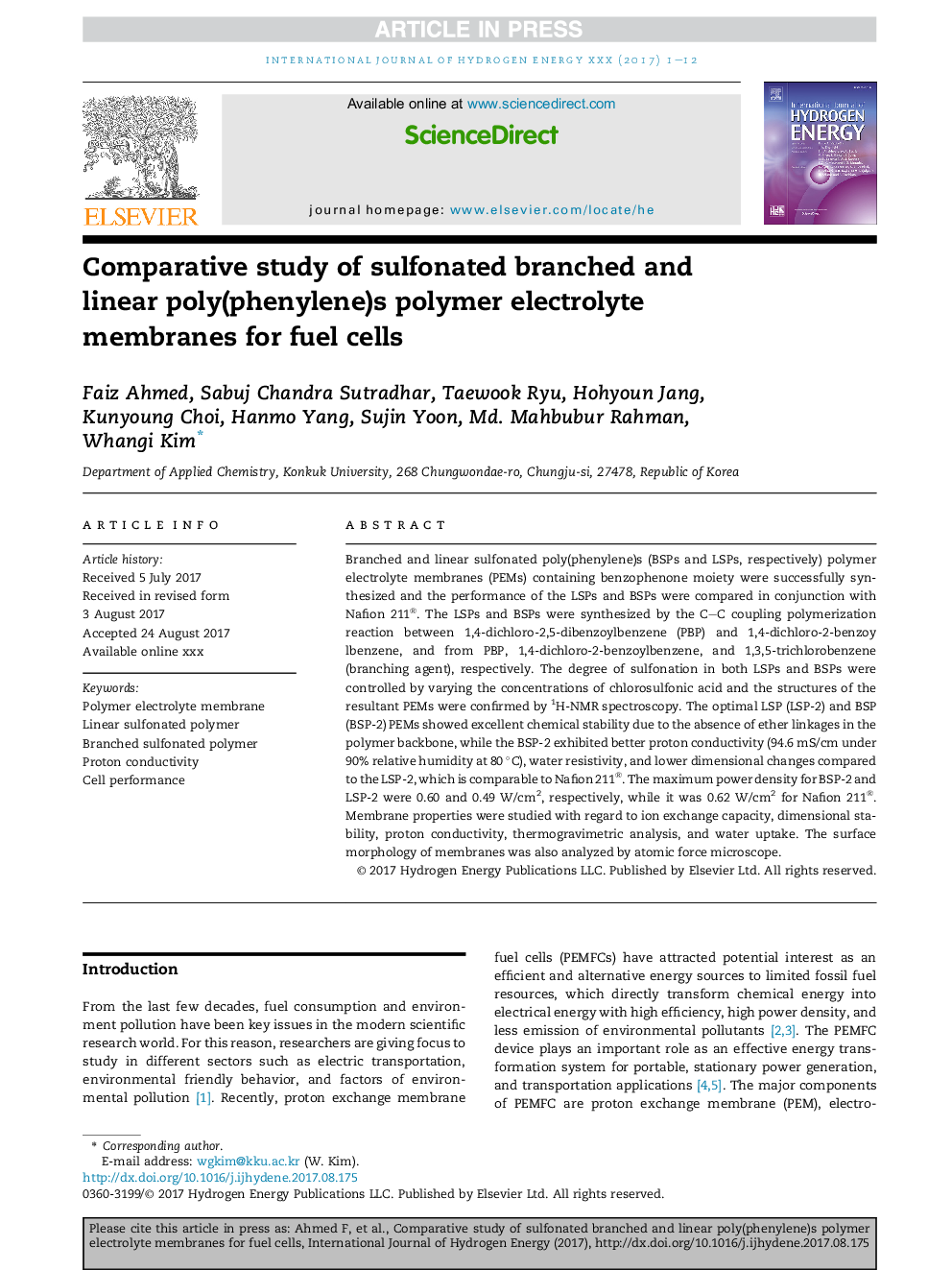| Article ID | Journal | Published Year | Pages | File Type |
|---|---|---|---|---|
| 7707443 | International Journal of Hydrogen Energy | 2018 | 12 Pages |
Abstract
Branched and linear sulfonated poly(phenylene)s (BSPs and LSPs, respectively) polymer electrolyte membranes (PEMs) containing benzophenone moiety were successfully synthesized and the performance of the LSPs and BSPs were compared in conjunction with Nafion 211®. The LSPs and BSPs were synthesized by the CC coupling polymerization reaction between 1,4-dichloro-2,5-dibenzoylbenzene (PBP) and 1,4-dichloro-2-benzoylbenzene, and from PBP, 1,4-dichloro-2-benzoylbenzene, and 1,3,5-trichlorobenzene (branching agent), respectively. The degree of sulfonation in both LSPs and BSPs were controlled by varying the concentrations of chlorosulfonic acid and the structures of the resultant PEMs were confirmed by 1H-NMR spectroscopy. The optimal LSP (LSP-2) and BSP (BSP-2) PEMs showed excellent chemical stability due to the absence of ether linkages in the polymer backbone, while the BSP-2 exhibited better proton conductivity (94.6 mS/cm under 90% relative humidity at 80 °C), water resistivity, and lower dimensional changes compared to the LSP-2, which is comparable to Nafion 211®. The maximum power density for BSP-2 and LSP-2 were 0.60 and 0.49 W/cm2, respectively, while it was 0.62 W/cm2 for Nafion 211®. Membrane properties were studied with regard to ion exchange capacity, dimensional stability, proton conductivity, thermogravimetric analysis, and water uptake. The surface morphology of membranes was also analyzed by atomic force microscope.
Related Topics
Physical Sciences and Engineering
Chemistry
Electrochemistry
Authors
Faiz Ahmed, Sabuj Chandra Sutradhar, Taewook Ryu, Hohyoun Jang, Kunyoung Choi, Hanmo Yang, Sujin Yoon, Md. Mahbubur Rahman, Whangi Kim,
